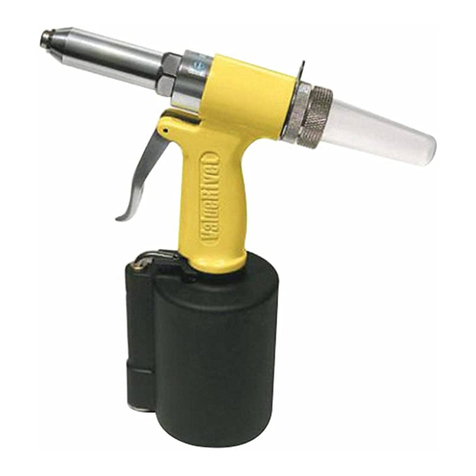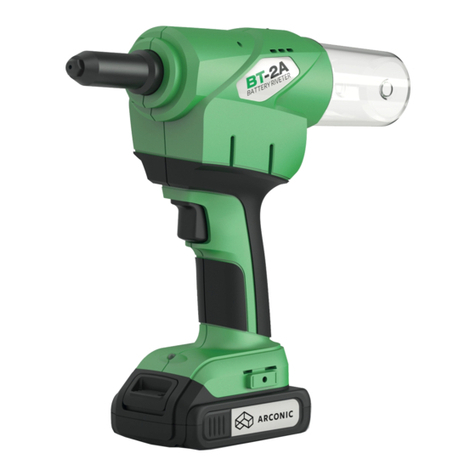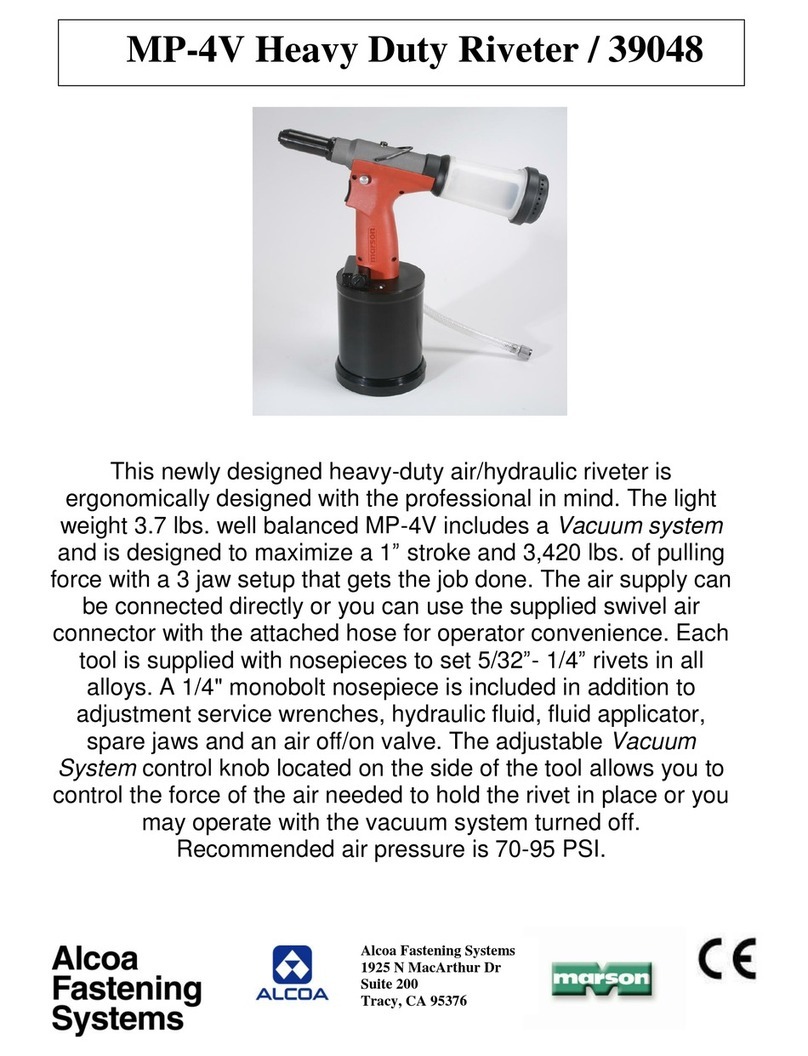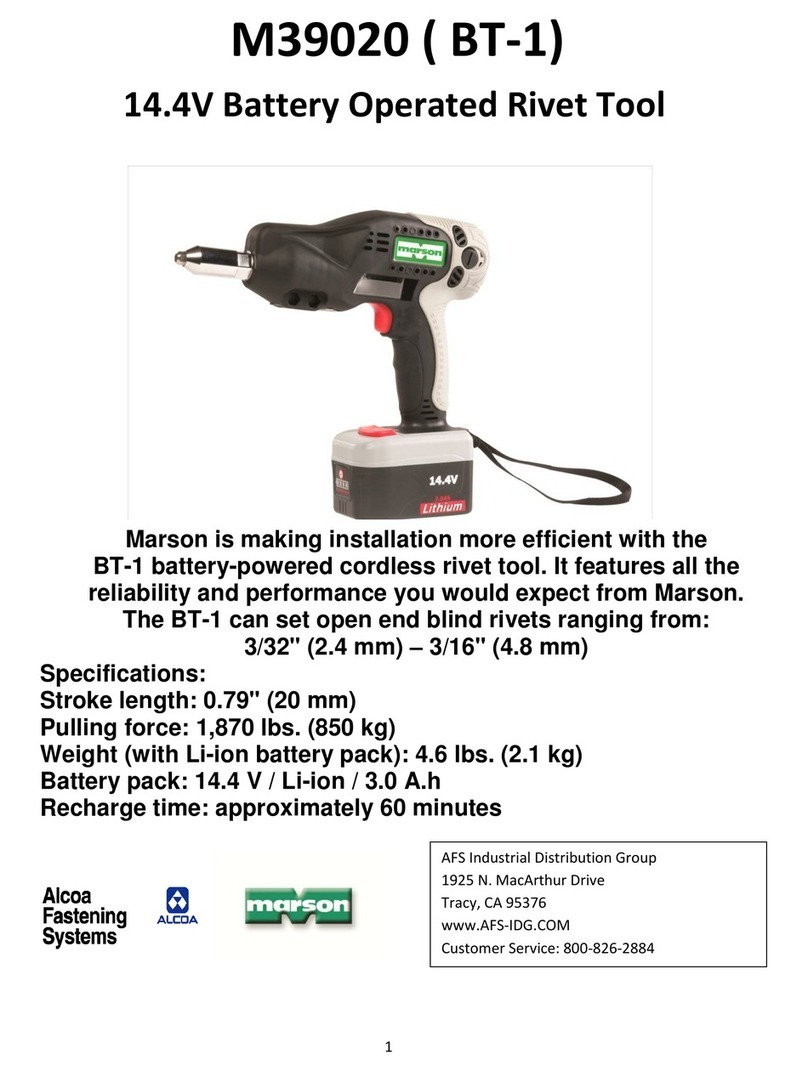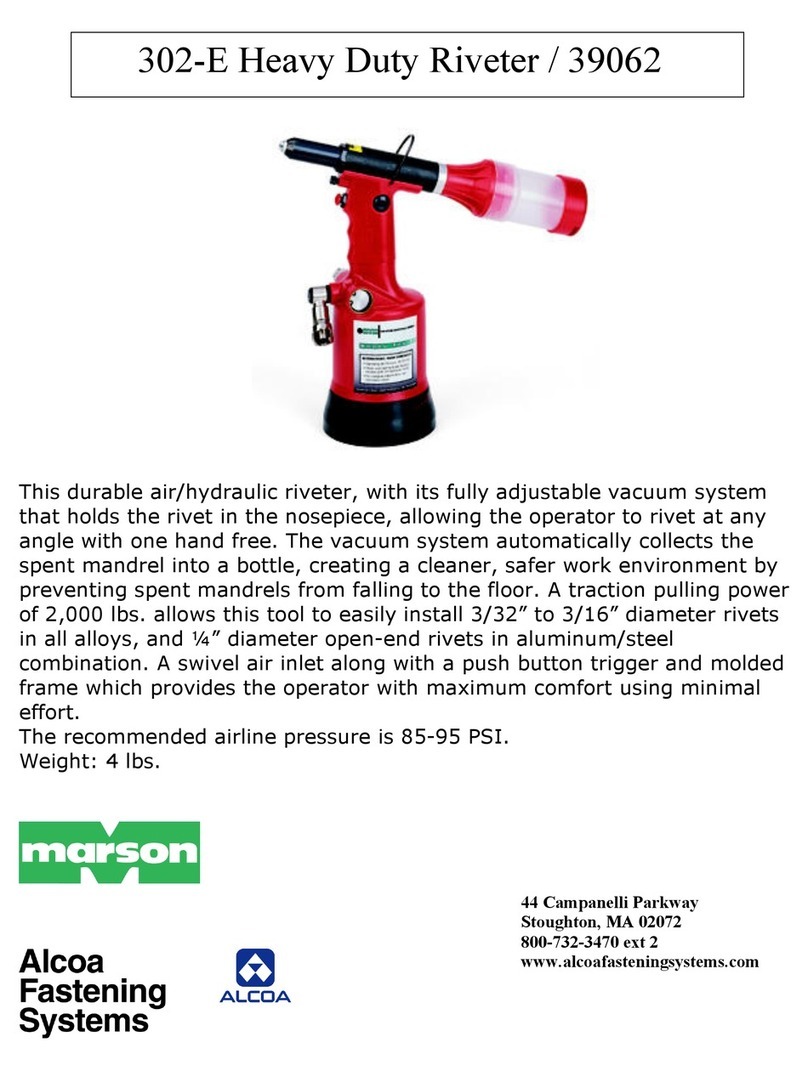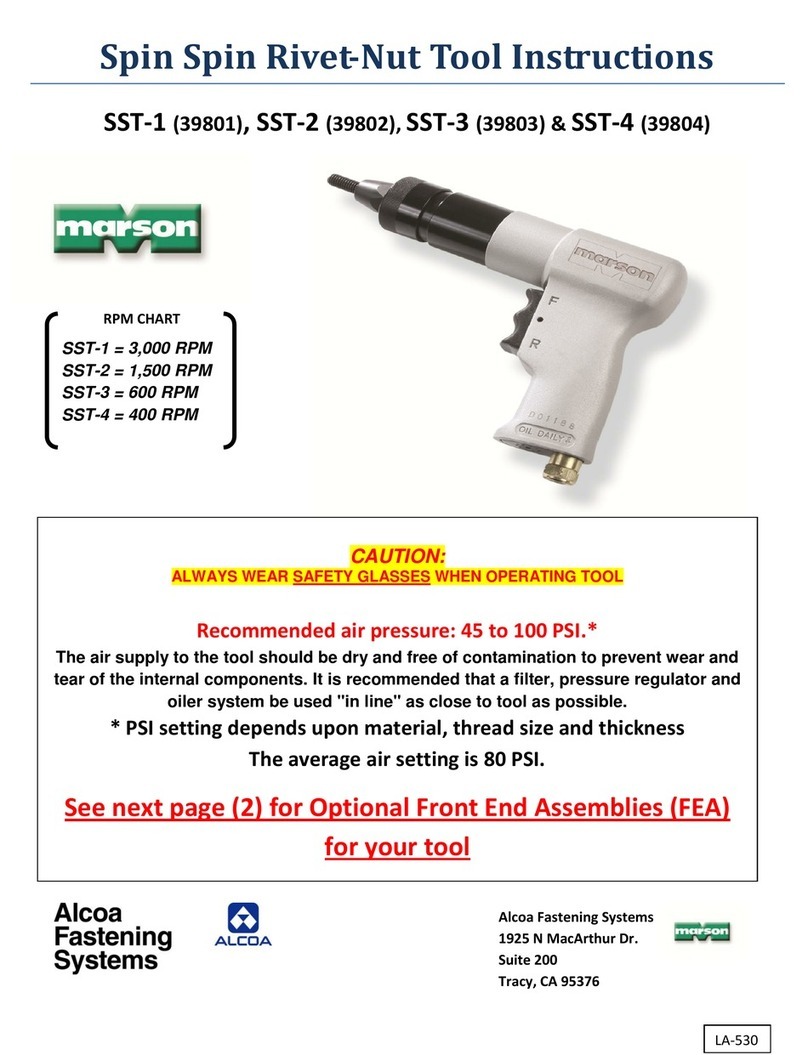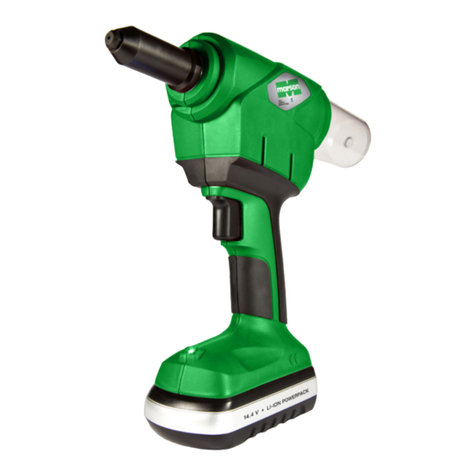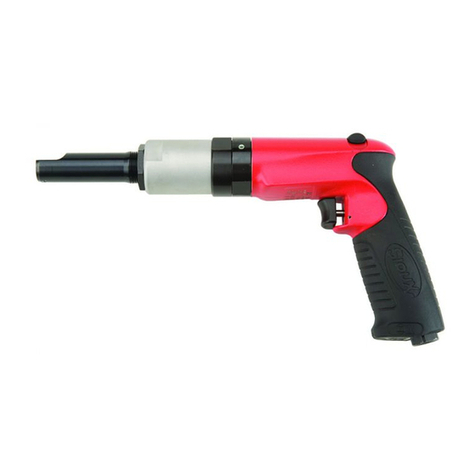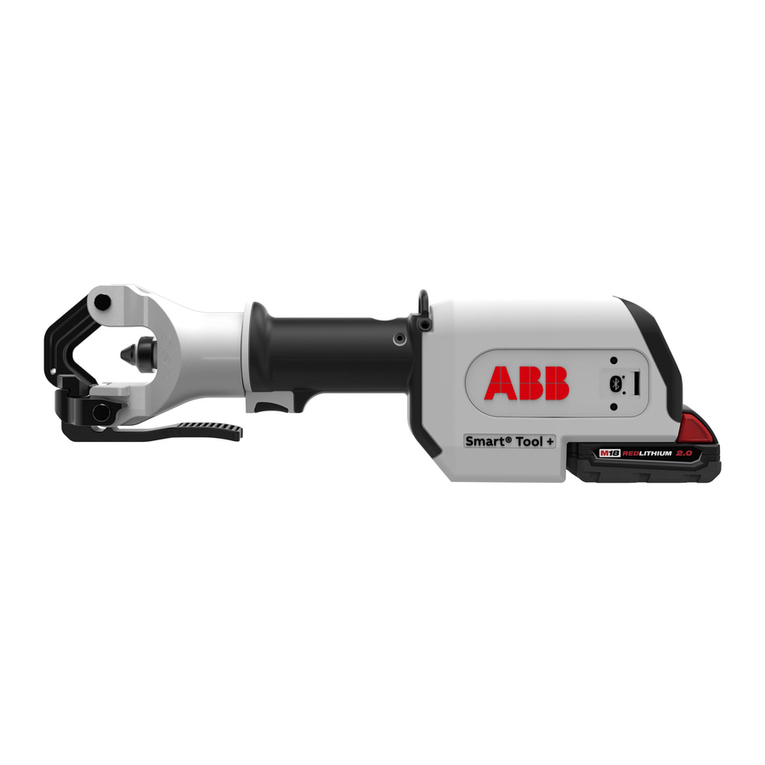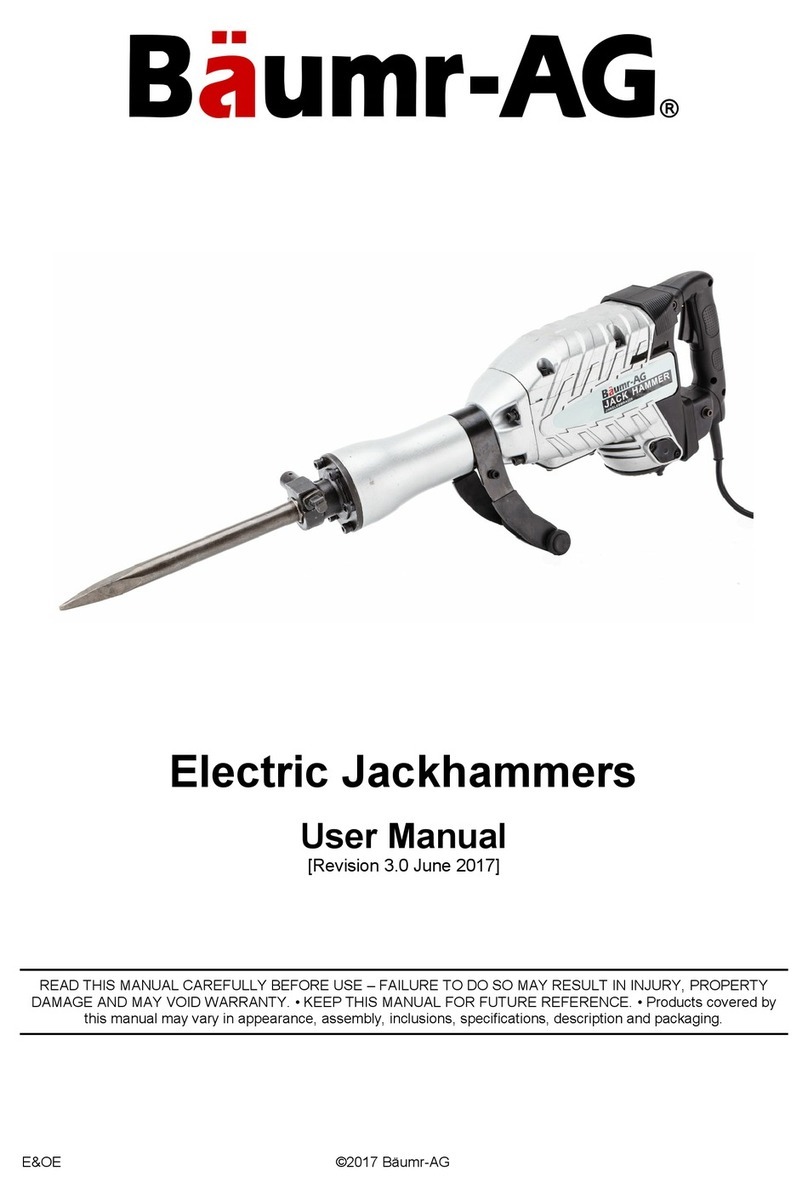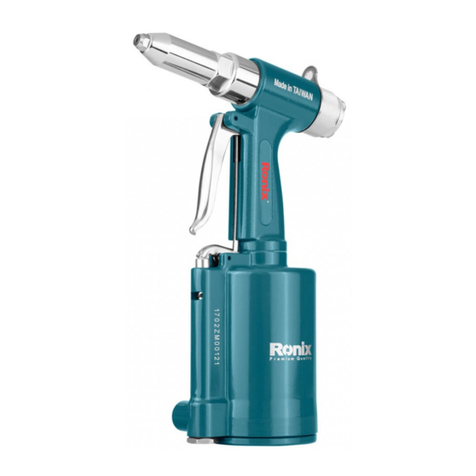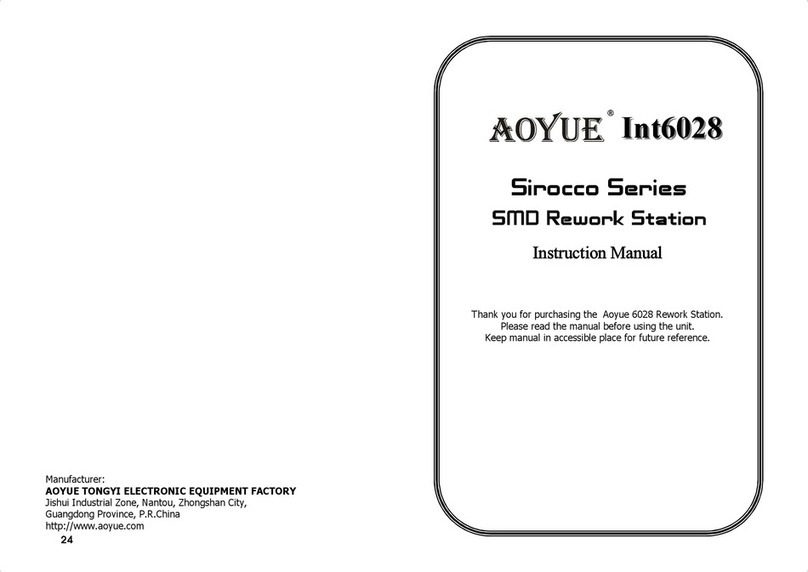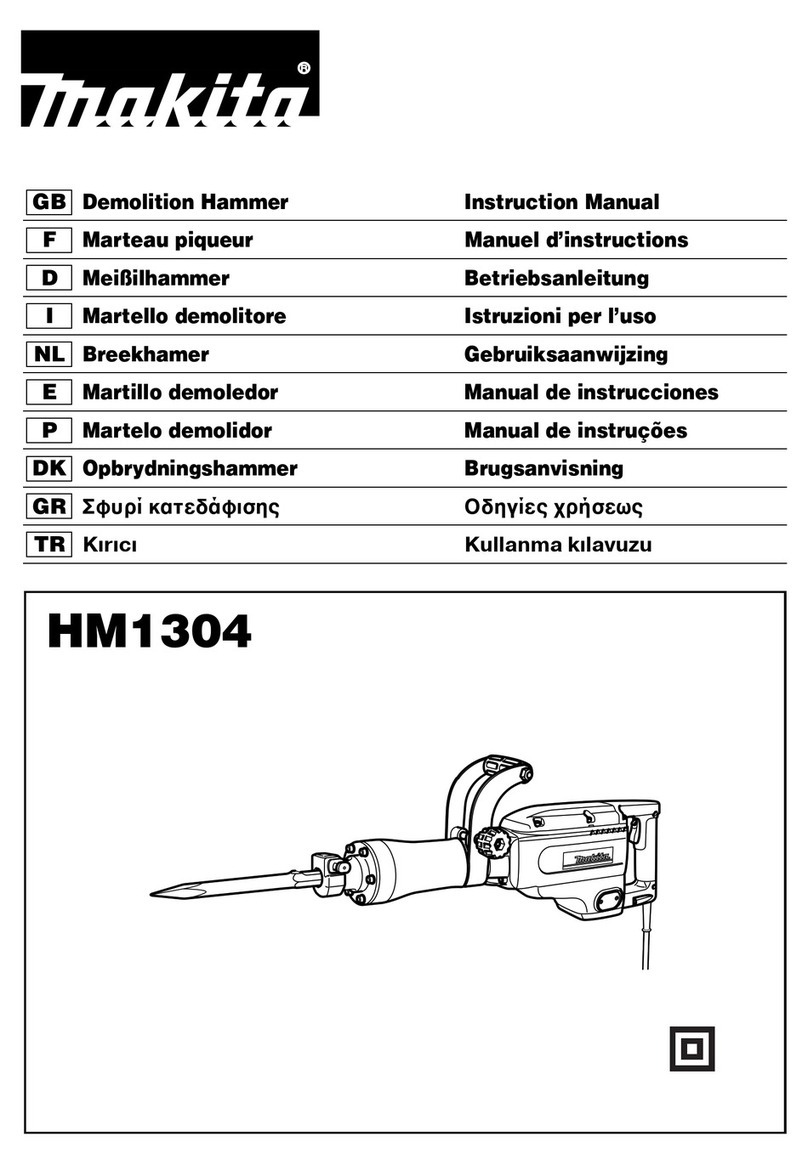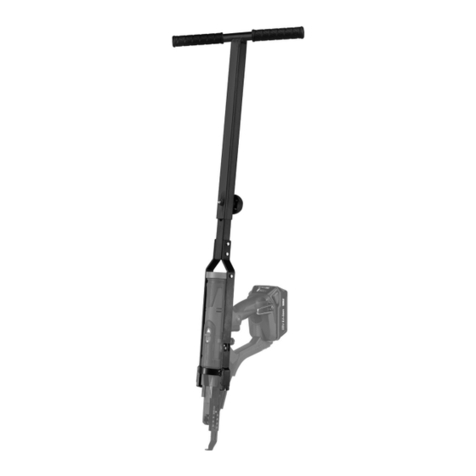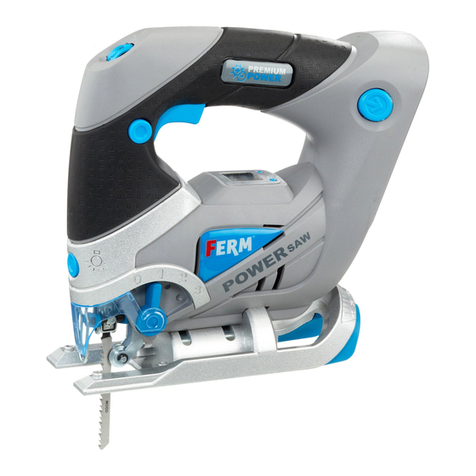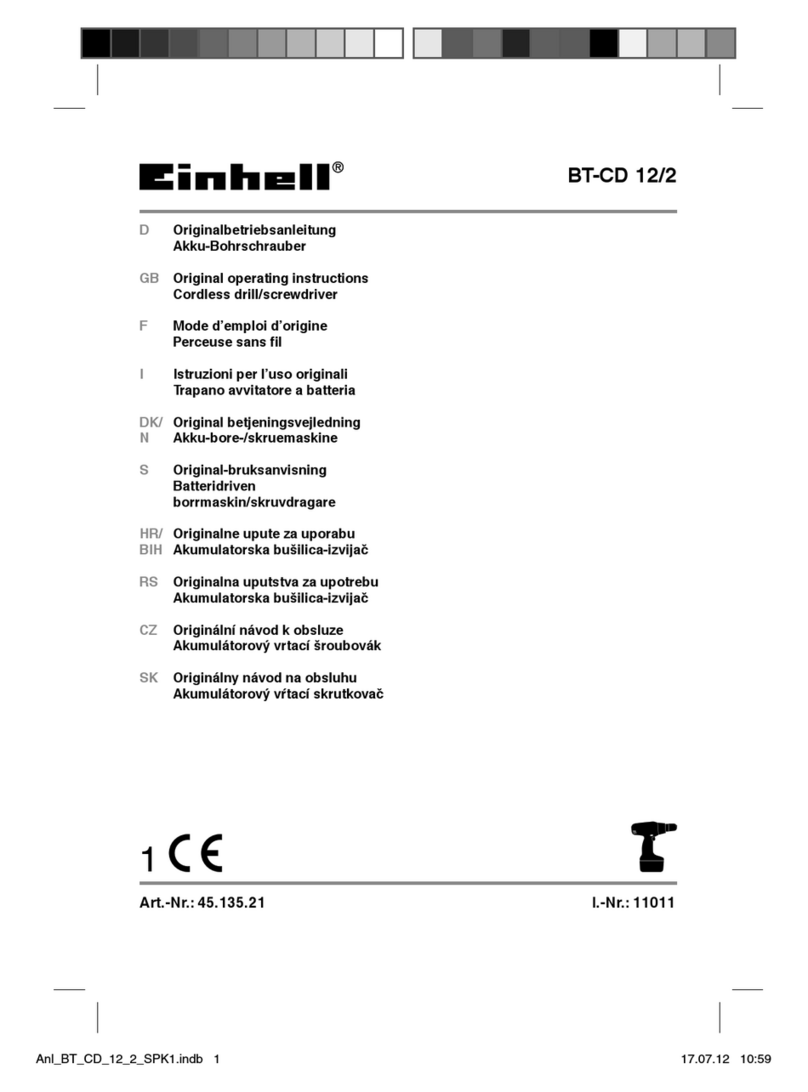4. Operation and handling of the electric riveting machine
a) Do not overload the machine.
Use the electric riveting machine that is suitable for your work.
The suitable electric riveting machine allows you to work better and safer in the specified range of performance.
b) Do not use an electric riveting machine that has a defective power switch.
An electric riveting machine which cannot be turned on and off any more is dangerous and has to be repaired.
c) Remove the plug from the power socket and/or remove the battery before making adjustments to the device, changing accessories
or putting the device away. This safety precaution prevents the inadvertent start of the electric riveting machine.
d) Store unused electric riveting machines out of the reach of children. Do not allow persons not familiar with the device or persons who
haven’t read these instructions to operate the device. Electric riveting machines are dangerous when in the hands of inexperienced persons.
e) Pay attention to the maintenance of electric riveting machines. Check if the moving parts are functioning flawlessly and do not jam.
Check for broken and damaged parts that could influence the operation of the electric riveting machine.
Repair the damaged parts before using the device. Many accidents with electric riveting machines stem from maintenance failures.
f) Use the electric riveting machine, accessories, tools etc. according to these instructions. Take into consideration the working conditions
and the type of work. The use of electric riveting machines for tasks other than the intended ones can lead to dangerous situations.
5. Use and handling of the battery tools
a) Only recharge the batteries in charging devices approved by the manufacturer.
There is a risk of fire when using a charging device designed for a specific battery type when it is used with other batteries.
b) In electric riveting machines, only use batteries that have been designed for this type of use.
Using other battery types may lead to fire and injuries.
c) When not using the battery, keep it away from paper clips, coins, keys, nails, screws and other small metallic object which
may cause the contacts to connect. If the battery contacts short-circuit, it may lead to burns or fire.
d) Fluid may emerge from the battery if it is used incorrectly. Avoid contact with that fluid. In case of accidental contact with the body,
rinse the area with water. If the battery fluid comes in contact with the eyes, call for medical help. Emerging battery fluid can lead to burns
and irritation of the skin.
6. Service
a) Only allow qualified personnel to repair your electric riveting machine and only use original spare parts.
This ensures the continuous safety of the electric riveting machine.
7. Security advice for electric riveting machines
• Hold the electric riveting machine firmly with both hands when working and keep standing steadily. The electric riveting machine
can be operated safer when using both hands.
• Immediately turn off the electric riveting machine if the electric riveting tool jams.
• Be prepared for a high reacting torque which causes strong recoil. The tool jams when the electric riveting machine is overloaded.
• Hold the electric riveting machine tightly.
• Secure the work-piece that is to be riveted. A work-piece is held more securely by a clamping device or a bench vise than by hand.
• Make sure that the power switch is turned to the “Off” position before inserting a battery. Holding your fingers close to the power switch
when carrying the electric riveting machine or inserting a battery while is “On” may lead to accidents.
• Do not open the battery, as this leads to the risk of a short-circuit. Keep the battery away from heat (e.g. permanent sun radiation)
and from fire due to risk of explosion.
• If the battery is damaged or used in an inappropriate manner, vapors may emerge from it. Get some fresh air and call for medical help
in case of complaints. The vapors can lead to irritation of the respiratory tracts.
• If the battery is defective, fluid may emerge from it and coat adjacent objects. Check the parts affected, clean them or replace them,
if necessary.
• Use the battery only with your MARSON BT-3 electric riveting machine. This is the only way to prevent dangerous overload of the battery.
